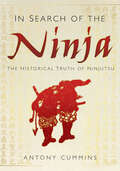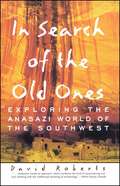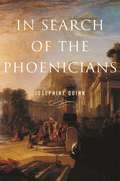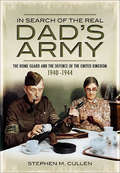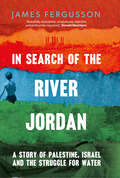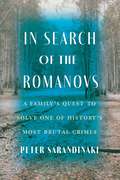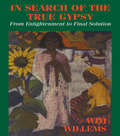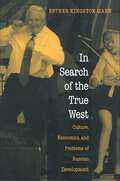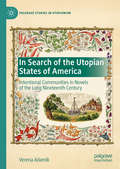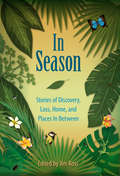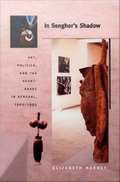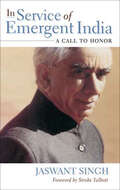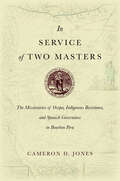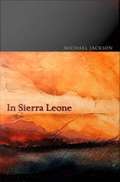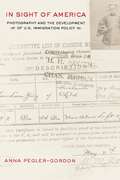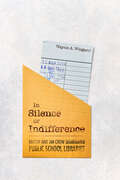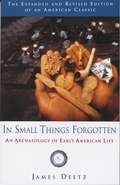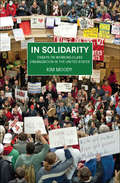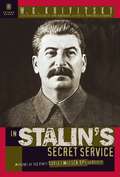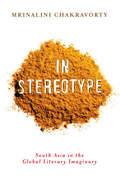- Table View
- List View
In Search of the Ninja: The Historical Truth of Ninjutsu
by Antony CumminsLost in modern myth, false history and general misinterpretation, the Ninja have been misrepresented for many years. More recently, a desire for a more historical view of the ninja has become a popular theme in the history/martial arts community and Antony Cummins is the primary driving force behind that movement.In Search of the Ninja is based upon the Historical Ninjutsu Research Team’s translations of the major ninja manuals and consists of genuinely new material. Little historical research has been done on the Ninja of Japan. Here for the first time the connection of the famous Hattori family warriors with the Ninja is explained. The Samurai versus Ninja myth is dispelled. The realities of Ninja skills are analysed. How did a Ninja work underwater when mining castle walls? How can a bird be used to set fire to the enemy’s camp? The book explores newly discovered connections to ancient Chinese manuals, lost skills and the ‘hidden’ Zen philosophy that the Ninja followed. In Search of the Ninja is the first and only historical look at the shinobi of ancient Japan.
In Search of the Old Ones: Exploring the Anasazi World of the Southwest
by David RobertsThe Anasazi, ancestors of the Pueblo people, inhabited the Southwest for at least 5,000 years. David Roberts' extensive interviews and back country travels create a richly detailed portrait of an enigmatic people.
In Search of the Phoenicians (Miriam S. Balmuth Lectures in Ancient History and Archaeology)
by Josephine QuinnWho were the ancient Phoenicians, and did they actually exist?The Phoenicians traveled the Mediterranean long before the Greeks and Romans, trading, establishing settlements, and refining the art of navigation. But who these legendary sailors really were has long remained a mystery. In Search of the Phoenicians makes the startling claim that the “Phoenicians” never actually existed. Taking readers from the ancient world to today, this monumental book argues that the notion of these sailors as a coherent people with a shared identity, history, and culture is a product of modern nationalist ideologies—and a notion very much at odds with the ancient sources.Josephine Quinn shows how the belief in this historical mirage has blinded us to the compelling identities and communities these people really constructed for themselves in the ancient Mediterranean, based not on ethnicity or nationhood but on cities, family, colonial ties, and religious practices. She traces how the idea of “being Phoenician” first emerged in support of the imperial ambitions of Carthage and then Rome, and only crystallized as a component of modern national identities in contexts as far-flung as Ireland and Lebanon.In Search of the Phoenicians delves into the ancient literary, epigraphic, numismatic, and artistic evidence for the construction of identities by and for the Phoenicians, ranging from the Levant to the Atlantic, and from the Bronze Age to late antiquity and beyond. A momentous scholarly achievement, this book also explores the prose, poetry, plays, painting, and polemic that have enshrined these fabled seafarers in nationalist histories from sixteenth-century England to twenty-first century Tunisia.
In Search of the Real Dad's Army: The Home Guard and the Defence of the United Kingdom, 1940–1944
by Stephen M. Cullen&“A fascinating examination of one of the best-known British forces of the Second World War . . . An efficient and increasingly professional military unit.&” —History of War What was the Home Guard? Who were the men and women who served in it? And what can be said of their real role and significance once the popular myths have been stripped away? Despite the fame of the Home Guard—of Dad&’s Army—the true story of this wartime organization tends to be neglected. The myths obscure the reality. Stephen Cullen&’s aim in this thoroughgoing new study is to cut through the misunderstandings in order to reassess the Home Guard and its contribution to Britain&’s war effort—and to deepen our understanding of the men and women who were members of it. He sets the Home Guard in the long historical context of domestic defense planning, then focuses on the preparations made before the outbreak of the Second World War. In detail he traces the changing role of the Home Guard during its wartime existence as it adapted to meet the multitude of challenges it faced—from civil defense and intelligence gathering to training for guerrilla warfare. &“This enjoyable and well-illustrated book covers the &‘rags to riches&’ story of the Home Guard from the 1940 volunteer in civilian clothing, armed with a keepsake from an earlier war, to the fully trained and equipped part-time soldier.&” —The Armourer &“An interesting and accurate account of a force that was in fact a well drilled, well organised and by wars end, a very professional fighting unit by the time of its stand down in 1944.&” —WW2 Connection
In Search of the River Jordan: A Story of Palestine, Israel and the Struggle for Water
by James FergussonA writer&’s travels along the legendary yet contested Jordan River—exploring the long conflict over water supply Access to water has played a pivotal role in the Israel-Palestine dispute. Israel has diverted the River Jordan via pipes and canals to build a successful modern state. But this has been at the expense of the region&’s cohabitants. Gaza is now so water-stressed that the United Nations has warned it could soon become uninhabitable; its traditional water source has been ruined by years of over-extraction and mismanagement, the effects exacerbated by years of crippling blockade. Award-winning author and journalist James Fergusson travels to every corner of Israel and Palestine telling the story of the River Jordan and the fierce competition for water. Along the way, he meets farmers, officials, soldiers, refugees, settlers, rioting youth, religious zealots, water experts, and engineers on both sides of the Green Line. Fergusson gives voice to the fears and aspirations of the region&’s inhabitants and highlights the centrality of water in negotiating future peace.
In Search of the Romanovs: A Family's Quest to Solve One of History's Most Brutal Crimes
by Peter SarandinakiA thrilling, true-life detective story about the search for the missing members of the Romanov royal family, murdered by Bolsheviks in 1918, and one family&’s involvement in the hundred-year-old forensic investigation into their deaths, clandestine burials, and the recovery and authentication of the remains.
In Search of the True Gypsy: From Enlightenment to Final Solution
by Wim WillemsIt has only been recognised tardily and with reluctance that during the Second World War hundreds of thousands of itinerants met the same horrendous fate as Jews and other victims of Nazism. Gypsies appear to appeal to the imagination simply as social outcasts and scapegoats or, in a flattering but no more illuminating light, as romantic outsiders.In this study, contemporary notions about Gypsies are traced back as far as possible to their roots, in an attempt to lay bare why stigmatisation of gypsies, or rather groups labelled as such, has continuned from the distant past even to today.
In Search of the True West: Culture, Economics, and Problems of Russian Development
by Esther Kingston-MannThis ground-breaking work documents Russian efforts to appropriate Western solutions to the problem of economic backwardness since the time of Catherine the Great. Entangled then as now with issues of cultural borrowing, educated Russians searched for Western nations, ideas, and social groups that embodied universal economic truths applicable to their own country. Esther Kingston-Mann describes Russian Westernization--which emphasized German as well as Anglo-U.S. economics--while she raises important questions about core values of Western culture and how cultural values and priorities are determined. This is the first historical account of the significant role played by Russian social scientists in nineteenth-century Western economic and social thought. In an era of rapid Western colonial expansion, the Russian quest for the "right" Western economic model became more urgent: Was Russia condemned to the fate of India if it did not become an England? In the 1900s, Russian liberal economists emphasized cultural difference and historical context, while Marxists and prerevolutionary government reformers declared that inexorable economic laws doomed peasants and their "medieval" communities. On the eve of 1917, both the tsarist regime and its leading critics agreed that Russia must choose between Western-style progress or "feudal" stagnation. And when peasants and communes survived until Stalin's time, he mercilessly destroyed them in the name of progress. Today Russia's painful modernizing traditions shape the policies of contemporary reformers, who seem as certain as their predecessors that economic progress requires wholesale obliteration of the past.
In Search of the Utopian States of America: Intentional Communities in Novels of the Long Nineteenth Century (Palgrave Studies in Utopianism)
by Verena AdamikThis book endeavours to understand the seemingly direct link between utopianism and the USA, discussing novels that have never been brought together in this combination before, even though they all revolve around intentional communities: Imlay’s The Emigrants (1793), Hawthorne’s The Blithedale Romance (1852), Howland’s Papas Own Girl (1874), Griggs’s Imperium in Imperio (1899), and Du Bois’s The Quest of the Silver Fleece (1911). They relate nation and utopia not by describing perfect societies, but by writing about attempts to immediately live radically different lives. Signposting the respective communal history, the readings provide a literary perspective to communal studies, and add to a deeply necessary historicization for strictly literary approaches to US utopianism, and for studies that focus on Pilgrims/Puritans/Founding Fathers as utopian practitioners. This book therefore highlights how the authors evaluated the USA’s utopian potential and traces the nineteenth-century development of the utopian imagination from various perspectives.
In Search of the Warrior Spirit, Fourth Edition: Teaching Awareness Disciplines to the Green Berets
by Richard Strozzi-HecklerThe war in Iraq has heightened interest in the military mindset and raised questions about whether it's possible to be a mindful, moral fighter at a time when impersonal, technology based warfare reigns. In Search of the Warrior Spirit confronts this thorny issue with Richard Strozzi-Heckler's trademark personal, sympathetic style. In a top-secret U. S. military experiment, the author was asked to teach Eastern awareness disciplines ranging from aikido to meditation to a group of twenty-five Green Berets. This account chronicles his experiences in the training program and his attempts to revive traditional warriorship in a technological society. In Search of the Warrior Spirit explores the nature of war, the meaning of masculinity, and the need for moral values in the military. The book includes Heckler's response to 9/11, his experiences with the Pentagon and U. S. soldiers in Afghanistan, and his poignant reflections on the movie Black Hawk Down, which depicts the deaths of two of his trainees. In this revised edition, the author talks movingly of his visits to Afghanistan with NATO and about the Trojan Warrior Project and Marine Warrior Project, relating the tragic events in a war zone and revelatory conversations with both ordinary soldiers and such leaders as the Supreme Allied Commander of Europe.
In Search of the Wild Tofurky: How a Business Misfit Pioneered Plant-Based Foods Before They Were Cool
by Steve Richardson Seth TibbottThe founder of Tofurky reveals how an idealistic hippie living in a treehouse created a global brand—and sold millions of products without selling out. In this entertaining memoir, Seth Tibbott reveals how he achieved overnight success—but only after fifteen years of intrepid failure. He tells the triumphant tale of how a self-described hippie with no business training but plenty of enterprising goals grew a $2,500 startup into a global brand and ushered in a plant-based foods renaissance along the way. Tibbott took home a grand total of $31,000 in his first nine years of striving to bring to the people a nearly unknown soy product—tempeh—he knew in his gut was revolutionarily tasty. He eschewed a buttoned-up lifestyle and resided in tipis, trailers, and a treehouse; rented workspace to piano-repairing circus clowns; and even briefly counted the infamous Rajneeshees as clients. Tibbott was never one to chase the money or try to fit in. Instead, he built a business that fit him. Thus Tibbott discovered the &“secret sauce&” ingredients that took his now-international brand from fameless to fame-ish to famous: bootstrapping, building business intuition, and staying true to his belief in eco-friendly practices. In Search of the Wild Tofurky proves that a good idea can change the world and make money, no matter the naysayers or the sometimes-harsh twists and turns of the unconventional path. &“Expert advice and inspiration from a most unconventional source . . . An education in the business of ethics.&” ―Eric C Lindstrom, author of The Skeptical Vegan
In Season: Stories of Discovery, Loss, Home, and Places In Between
by Jim RossFlorida Book Awards, Silver Medal for Florida Nonfiction First-time travelers to Florida often imagine the state as just a vacationland or a swamp--a place to visit and to leave behind. But the writers in this collection discover the truth that everyone who's lived in the state knows. When you venture into Florida you won't find what you expect, and what you do find will stay with you forever. The authors of these essays come to Florida for different reasons. Love, fortune, family, rest, natural beauty, or a fresh start. They encounter a place so diverse that it defies easy categorization. Lauren Groff describes her experience settling in Florida after growing up in the Northeast and finds an affinity with the strong-willed writer Marjorie Kinnan Rawlings, who grew to resent the cities of her past and embraced the wild lands that inspired The Yearling. Cuban-born Susannah Rodriguez Drissi travels to Miami and learns what the city does and doesn't mean for Cuban Americans. Deesha Philyaw comes to the state to care for her mother, who is dying of cancer. Rick Bragg seeks out the beauty of the Gulf of Mexico and writes about how it was threatened by the Deepwater Horizon oil spill. In these stories, Florida is more than a setting--it's a character of its own. It stirs up hurricanes and rainstorms, enchants with natural springs and cypress forests, and endures in the face of pollution. For all of these writers, Florida is a force that brings about moments of personal insight and growth, a place where hard lessons are learned and true joy is experienced. Their essays illustrate that the places we inhabit put a stamp on us, even if we only call them home for a season. Contributors: Chantel Acevedo | Jan Becker | Marion Starling Boyer | Rick Bragg | Jennifer S. Brown | Lucy Bryan | Linda Buckmaster | Jill Christman | Susannah Rodriguez Drissi | Sarah Fazeli | Corey Ginsberg | Lauren Groff | Katelyn Keating | Sandra Gail Lambert | Lara Lillibridge | Bill Maxwell | Karen Salyer McElmurray | Deesha Philyaw | Lisa Roney | Jim Ross | Lia Skalkos
In Senghor's Shadow: Art, Politics, and the Avant-Garde in Senegal, 1960-1995
by Elizabeth HarneyIn Senghor's Shadow is a unique study of modern art in postindependence Senegal. Elizabeth Harney examines the art that flourished during the administration of Lopold Sdar Senghor, Senegal's first president, and in the decades since he stepped down in 1980. As a major philosopher and poet of Negritude, Senghor envisioned an active and revolutionary role for modern artists, and he created a well-funded system for nurturing their work. In questioning the canon of art produced under his aegis--known as the Ecole de Dakar--Harney reconsiders Senghor's Negritude philosophy, his desire to express Senegal's postcolonial national identity through art, and the system of art schools and exhibits he developed. She expands scholarship on global modernisms by highlighting the distinctive cultural history that shaped Senegalese modernism and the complex and often contradictory choices made by its early artists. Heavily illustrated with nearly one hundred images, including some in color, In Senghor's Shadow surveys the work of a range of Senegalese artists, including painters, muralists, sculptors, and performance-based groups--from those who worked at the height of Senghor's patronage system to those who graduated from art school in the early 1990s. Harney reveals how, in the 1970s, avant-gardists contested Negritude beliefs by breaking out of established artistic forms. During the 1980s and 1990s, artists such as Moustapha Dim, Germaine Anta Gaye, and Kan-Si engaged with avant-garde methods and local artistic forms to challenge both Senghor's legacy and the broader art world's understandings of cultural syncretism. Ultimately, Harney's work illuminates the production and reception of modern Senegalese art within the global arena.
In Service of Emergent India: A Call to Honor
by Jaswant SinghIn Service of Emergent India is an evocative insider's account of a crucial period in India's history. It provides an in-depth look at events that changed the way the world perceived India, and a unique view of Indian statecraft. As Minister of External Affairs, Defense, and Finance in the BJP-led governments of 1996 and 1998-2004, Jaswant Singh was the main foreign policy spokesman for the government of Atal Bihari Vajpayee during the 1998 nuclear tests by India and Pakistan, the hijacking to Kandahar, Afghanistan, of Indian Airlines flight IC 814, and the Kargil conflict between India and Pakistan, as well as other key events. In an account that is part memoir, part analysis of India's past and future prospects, Singh reflects on his childhood in rural Rajasthan at the end of the colonial period, his schooling and military training, and memories of Indian Independence and the Partition of India and Pakistan. He analyzes the first four decades of Indian nationhood under Congress Party rule, ongoing tensions between India and Pakistan, Sino-Indian relations, and post-9/11 U.S.-Indian relations.
In Service of Two Masters: The Missionaries of Ocopa, Indigenous Resistance, and Spanish Governance in Bourbon Peru
by Cameron D. JonesBy the early 1700s, the vast scale of the Spanish Empire led crown authorities to rely on local institutions to carry out their political agenda, including religious orders like the Franciscan mission of Santa Rosa de Ocopa in the Peruvian Amazon. This book follows the Ocopa missions through the eighteenth and early nineteenth centuries, a period marked by events such as the indigenous Juan Santos Atahualpa Rebellion and the 1746 Lima earthquake. Caught between the directives of the Spanish crown and the challenges of missionary work on the Amazon frontier, the missionaries of Ocopa found themselves at the center of a struggle over the nature of colonial governance. Cameron D. Jones reveals the changes that Spain's far-flung empire experienced from borderland Franciscan missions in Peru to the court of the Bourbon monarchy in Madrid, arguing that the Bourbon clerical reforms that broadly sought to bring the empire under greater crown control were shaped in turn by groups throughout the Americas, including Ocopa friars, the Amerindians and Africans in their missions, and bureaucrats in Lima and Madrid. Far from isolated local incidents, Jones argues that these conflicts were representative of the political struggles over clerical reform occurring throughout Spanish America on the eve of independence.
In Service to His Master
by Lizzie AshworthIn Ancient Rome, as Saturnalia dawns and Rome prepares for the celebration, slave Antius has set in motion a disaster involving his master, Marcellus. The Roman governor over all Britannia, Ostorius Scapula, will soon arrive at the remote fortress. Marcellus must welcome the ruler with full Roman hospitality, which means handing over a captured Cornovii woman. This same woman holds Marcellus’ affections, however misplaced Antius believes they might be.Antius suffers his beloved master’s wrath when he tells the governor of the Cornovii woman. Heartbroken, Antius looks for his beautiful, young slave Quintus. For months he has waited to deepen their relationship, savoring each moment of the youth’s company. Is the time to do so now? Can he set aside his long-held feelings for Marcellus and carve out a new future for himself and Quintus?
In Sierra Leone
by Michael JacksonIn 2002, as Sierra Leone prepared to announce the end of its brutal civil war, the distinguished anthropologist, poet, and novelist Michael Jackson returned to the country where he had intermittently lived and worked as an ethnographer since 1969. While his initial concern was to help his old friend Sewa Bockarie (S. B. ) Marah--a prominent figure in Sierra Leonean politics--write his autobiography, Jackson's experiences during his stay led him to create a more complex work: In Sierra Leone, a beautifully rendered mosaic integrating S. B. 's moving stories with personal reflections, ethnographic digressions, and meditations on history and violence. Though the Revolutionary United Front (R. U. F. ) ostensibly fought its war (1991-2002) against corrupt government, the people of Sierra Leone were its victims. By the time the war was over, more than fifty thousand were dead, thousands more had been maimed, and over one million were displaced. Jackson relates the stories of political leaders and ordinary people trying to salvage their lives and livelihoods in the aftermath of cataclysmic violence. Combining these with his own knowledge of African folklore, history, and politics and with S. B. 's bittersweet memories--of his family's rich heritage, his imprisonment as a political detainee, and his position in several of Sierra Leone's post-independence governments--Jackson has created a work of elegiac, literary, and philosophical power.
In Sight of America: Photography and the Development of U. S. Immigration Policy
by Anna Pegler-GordonThis work is the first to take a comprehensive look at the history of immigration policy in the United States through the prism of visual culture. Anna Pegler-Gordon considers the role and uses of visual documentation at Angel Island for Chinese immigrants, at Ellis Island for European immigrants, and on the U.S.-Mexico border.
In Sight of America: Photography and the Development of U.S. Immigration Policy (American Crossroads #28)
by Dr. Anna Pegler-GordonWhen restrictive immigration laws were introduced in the late-nineteenth and early-twentieth centuries, they involved new requirements for photographing and documenting immigrants--regulations for visually inspecting race and health. This work is the first to take a comprehensive look at the history of immigration policy in the United States through the prism of visual culture. Including many previously unpublished images, and taking a new look at Lewis Hine's photographs, Anna Pegler-Gordon considers the role and uses of visual documentation at Angel Island for Chinese immigrants, at Ellis Island for European immigrants, and on the U.S.-Mexico border. Including fascinating close visual analysis and detailed histories of immigrants in addition to the perspectives of officials, this richly illustrated book traces how visual regulations became central in the early development of U.S. immigration policy and in the introduction of racial immigration restrictions. In so doing, it provides the historical context for understanding more recent developments in immigration policy and, at the same time, sheds new light on the cultural history of American photography.
In Silence or Indifference: Racism and Jim Crow Segregated Public School Libraries
by Wayne A. WiegandLibrarians around the country are currently on a battleground, defending their right to purchase and circulate books dealing with issues of race and systemic racism. Despite this work, the library community has often overlooked—even ignored—its own history of White supremacy and deliberate inaction on the part of White librarians and library leadership. Author Wayne A. Wiegand takes a crucial step to amend this historical record. In Silence or Indifference: Racism and Jim Crow Segregated Public School Libraries analyzes and critiques the world of professional librarianship between 1954 and 1974.Wiegand begins by identifying racism in the practice and customs of public school libraries in the years leading up to the Brown v. Board of Education decision. This culture permeated the next two decades, as subsequent Supreme Court decisions led to feeble and mostly unsuccessful attempts to integrate Jim Crow public schools and their libraries. During this same period, the profession was honing its national image as a defender of intellectual freedom, a proponent of the freedom to read, and an opponent of censorship. Still, the community did not take any unified action to support Brown or to visibly oppose racial segregation. As Black school librarians and their Black patrons suffered through the humiliations and hostility of the Jim Crow educational establishment, the American library community remained largely ambivalent and silent.The book brings to light a distressing history that continues to impact the library community, its students, and its patrons. Currently available school library literature skews the historical perspective that informs the present. In Silence or Indifference is the first attempt to establish historical accountability for the systemic racism contemporary school librarianship inherited in the twenty-first century.
In Small Things Forgotten: An Archaeology of Early American Life
by James DeetzHistory is recorded in many ways. According to author James Deetz, the past can be seen most fully by studying the small things so often forgotten. Objects such as doorways, gravestones, musical instruments, and even shards of pottery fill in the cracks between large historical events and depict the intricacies of daily life. In his completely revised and expanded edition ofIn Small Things Forgotten, Deetz has added new sections that more fully acknowledge the presence of women and African Americans in Colonial America. New interpretations of archaeological finds detail how minorities influenced and were affected by the development of the Anglo-American tradition in the years following the settlers' arrival in Plymouth, Massachusetts in 1620. Among Deetz's observations: Subtle changes in building long before the Revolutionary War hinted at the growing independence of the American colonies and their desire to be less like the British. Records of estate auctions show that many households in Colonial America contained only one chair--underscoring the patriarchal nature of the early American family. All other members of the household sat on stools or the floor. The excavation of a tiny community of freed slaves in Massachusetts reveals evidence of the transplantation of African culture to North America. Simultaneously a study of American life and an explanation of how American life is studied,In Small Things Forgotten, through the everyday details of ordinary living, colorfully depicts a world hundreds of years in the past.
In Solidarity: Essays on Working-Class Organization in the United States
by Kim Moody“One of the leading intellectuals of the labor movement” explores the state of unions in the United States, as well as evaluating the forces working against them (Robin D. G. Kelley, author of Hammer and Hoe).In this thorough collection of inspiring and informed essays, Kim Moody, one of the world’s most authoritative and recognized labor writers, asks key questions: What has happened to union organizing in the United States? Is there an alternative to the strike? How does the increased presence of immigrant and women workers change the balance of forces? What strategies can workers use to counteract company “union avoidance” campaigns and bureaucratic “business unionism”? What is the role of socialists in the labor movement?Drawing on his own background as a working-class radical, the works of Karl Marx, and the everyday experiences of nurses, miners, autoworkers, and more, Moody sketches a comprehensive picture of the state of US labor—and points the way forward for a rank-and-file union movement that can win real change.Praise for Kim Moody“One most of the most experienced working-class organizers in the US over the past few decades.” —Monthly Review“[His] books and articles have for more than forty years provided essential analysis and strategy for the labor left.” —New Politics
In Spite of Innocence: Erroneous Convictions in Capital Cases
by Michael L. Radelet Hugo Adam Bedau Constance E. PutnamA serious indictment of our biased legal system.
In Stalin's Secret Service
by Sam Tanenhaus W. G. KrivitskyWalter G. Krivitsky was the first top Soviet intelligence official to defect and reveal his secrets in 1939. In England in 1940, he came very close to unmasking the Soviet network inside Britain's intelligence services known as the "Cambridge 5" led by Kim Philby. Krivitsky thought that he would be safe in America, but he was unable to shed the dangerous secrets that he took with him. Stalin had to act quickly to protect his vast espionage network and there would be no escape from the Soviet assassination squad. In Stalin's Secret Service is like a spy thriller with an unwritten ending, because the author couldn't imagine his own death.
In Stereotype: South Asia in the Global Literary Imaginary
by Mrinalini ChakravortyConfronts the importance of cultural stereotypes in shaping the ethics and reach of global literature.
